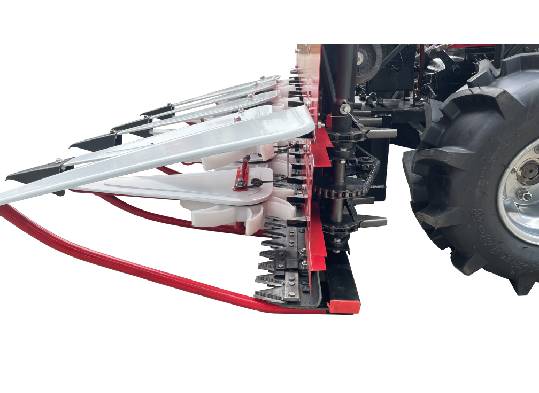small combine harvester
The Small Combine Harvester Revolutionizing Agriculture
In recent years, the agricultural sector has undergone a significant transformation, driven by technological advancements and the need for efficiency. One such innovation that stands out is the small combine harvester. This compact machinery is not only changing the landscape of farming for smallholder farmers but also contributing to sustainable agricultural practices globally.
What is a Small Combine Harvester?
A small combine harvester is a versatile piece of agricultural equipment designed to perform multiple harvesting tasks, such as reaping, threshing, and winnowing, all in a single operation. Unlike traditional, larger combine harvesters, these machines are tailored for smaller farms that may not have the space, resources, or budget to utilize larger equipment. They are typically lightweight, easy to maneuver, and can access more challenging terrains where large machinery would struggle.
Advantages of Small Combine Harvesters
1. Cost-Effectiveness One of the primary advantages of small combine harvesters is their affordability. Smaller farms often operate on tight budgets, making the financial accessibility of such machinery crucial. With a small combine harvester, farmers can reduce labor costs and complete harvesting tasks in a fraction of the time it would take with manual methods.
2. Efficiency and Time-saving The efficiency of small combine harvesters cannot be overlooked. These machines can quickly process large quantities of crops, allowing farmers to maximize their yields and minimize losses due to adverse weather conditions. Given that harvest time is often critical, the speed of these machines ensures that crops are gathered at their peak quality.
3. Versatility Small combine harvesters can often be adjusted to suit various crops, from grains like wheat and rice to oilseeds and legumes. Their adaptability makes them invaluable in regions where diverse crops are cultivated, allowing farmers to switch seamlessly between different harvesting tasks.
small combine harvester

4. Sustainability As agriculture faces increasing environmental pressures, the small combine harvester presents a more sustainable option. These machines generally consume less fuel than their larger counterparts and can operate efficiently on smaller plots of land. By promoting efficient use of resources, they contribute to minimizing the carbon footprint of farming activities.
5. Increased Productivity With advanced technology integrated into modern small combine harvesters, many models feature precision farming capabilities. These include GPS-guided navigation and yield monitoring systems, which enable farmers to optimize their operations and increase productivity, leading to higher profits.
The Role of Small Combine Harvesters in Food Security
Food security is a pressing global issue, and smallholder farmers play a critical role in addressing this challenge. Small combine harvesters empower these farmers by enhancing their productivity and ensuring that they can harvest and process their crops efficiently. The increased yield not only supports the local economy but also contributes to national food supply chains.
In regions prone to food shortages, the ability to harvest crops quickly and efficiently can mean the difference between abundance and scarcity. Small combine harvesters help mitigate post-harvest losses, which can account for a significant percentage of total yields, thus supporting overall food security.
Conclusion
The small combine harvester represents a transformative leap in agricultural technology that is especially relevant for smallholder farmers. By offering a combination of efficiency, cost-effectiveness, and sustainability, these machines play a vital role in modern agriculture. As the global demand for food continues to rise, investing in such innovations will not only enhance productivity but also contribute to the well-being of farmers and the communities they serve. Ultimately, the small combine harvester is more than just a tool; it is a vehicle for change in the quest for food security and sustainable agricultural practices.
Latest news
-
Mini Combine Harvester for Soybean | Compact & Efficient Soybean Harvesting SolutionsNewsNov.24,2025
-
Mini Combine Harvester for Paddy – Compact, Efficient Rice Harvesting SolutionsNewsNov.24,2025
-
Mini Chain Harvester: Compact Forestry Solutions for Sustainable LoggingNewsNov.23,2025
-
Kartar Mini Harvester – Compact, Efficient Harvesting Machinery for Small FarmsNewsNov.23,2025
-
Compact Power: Elevate Your Farming with Harvesting Machine SmallNewsNov.22,2025
-
Discover the Power and Potential of Harvester Mini Combine Machines | Efficient Small-Scale HarvestingNewsNov.22,2025








